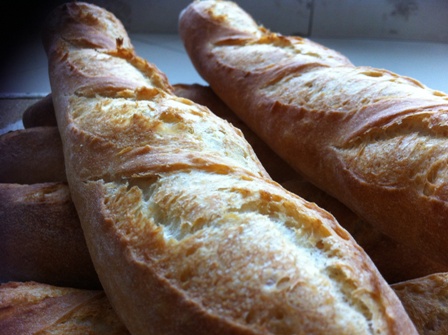I have been baking regularly on weekends, but haven’t had the chance to post a blog. Lately, my parents, whom I bake mostly for have complained that the crusts of my breads were too chewy, and demanded a softer version of my hearth multigrain bread. Butter, and/or enrichments came to mind instantly as these soften the crust and crumb, in addition to the usage of a bread pan instead of baking on hearth which also contributes to bread softness. However, recalling Floyd’s wonderful soft bread using Tang Zhong, I immediately knew that a Tang Zhong (aka: water roux) will bring much softness and tenderness to my multigrain breads without increasing the fat content.
Guided by Floyd’ recipe, I limited my Tang Zhong to 5% of total flour weight. It was made with 45 grams of White bread flour, and 225 grams of water. After all ingredients were mixed, the dough was unmanageably wet and would not form coherent dough. I was worried about the effects that Tang Zhong’s might have on my recipe, but I persisted and added slightly more flour. The dough began to come together and was finally manageable, although still wet.
After 2 hours worth of initial bulk fermentation, and two stretches and folds, the dough was retarded for an hour, to allow my poolish baguettes to be baked first:


Shaped and molded, final proofing took 3-3.5 hours, and was then was baked at 420F for 15 minutes (no steam), and 400F for 20 minutes.

The bread was allowed to cool for 2 hours, after which it was sliced and wrapped. The bread is incredibly soft, tender, moist, and full of grain/seed goodness! Next bake, I’ll reduce the hydration to a reasonable level.

- Khalid